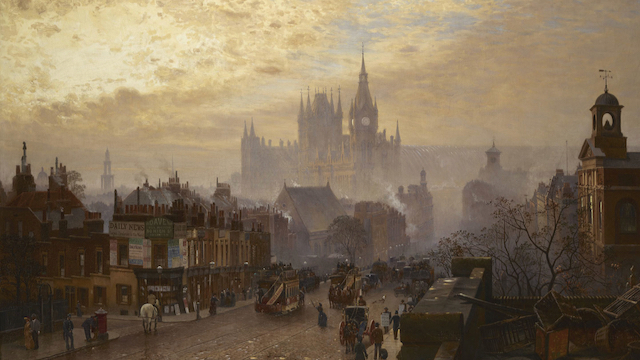If any fictional character can be said to be immortal, it is Sherlock Holmes.

So begins Simon Callow’s review of the new audio version of (most of) the Canon from Audible, read by Stephen Fry, in the New York Times Book Review: The Sound of Sherlock: Stephen Fry Voices the Master Sleuth.
After recounting a few of the many adaptations and pastiches that have appeared over the years – including The Seven-Per-Cent Solution, Private Life of Sherlock Holmes, and House – he returns to the ongoing interest in the Canon since its original publication.
The reasons for Holmes’s enduring fascination are easy to understand. He restores logic to an unruly, disturbingly incomprehensible world. Initial chaos — the crime — appears to be without meaning. The great detective, inhumanly brilliant, makes sense of things again. […] We come to him like frightened children, in search of explanations. He will never fail us. At least in the realm of crime — though not in the territory of the human heart — he sheds light where there has previously only been darkness. He is clever Daddy, who leaves us reassured, able to sleep at night. But he is by no means perfect. Conan Doyle’s coup de maître, as Watson might say, is to make his hero a flawed man, prone to deep melancholia, liable to escape into cocaine- or opium-induced oblivion. He has the soul of an artist, as demonstrated in his violin playing: He is prepared to please Watson by knocking off some Mendelssohn or Wagner, but when left to himself, he “scrapes carelessly” at the fiddle thrown across his knee. Sometimes, Watson tells us, the chords were sonorous and melancholy, sometimes fantastic and cheery: obviously an avant-gardist at work. Holmes’s behavior, tut-tuts Watson, is bohemian: His papers are piled up higgledy-piggledy all over his rooms, he is entirely disorganized domestically, he is given to long bouts of brooding silence. Nothing that is not germane to his work as a consulting detective is allowed to clutter up his mind. He is indifferent to literature, knows little of history, and cosmology has no part in his intellectual framework. This, too, has endeared Holmes to his readers: The genius is vulnerable, his mental prowess bought at a cost.

The audio recording also includes some forewords from Fry himself, which Callow says “constitute one of the set’s major pleasures, illuminated by informed enthusiasm and personal revelation: In one he rather touchingly recounts how his first encounter with Holmes, at a very early age, changed his life, leading him on to truancy, expulsion from school and, finally, briefly, prison.” For Fry’s vocal performance, Callow has nothing but praise:
In the Holmes books, he reads just under a thousand pages in his wonderfully even and infallibly intelligent voice, touching the characters in deftly — the books field a very large number of well-educated middle-aged men, and it must have been difficult to differentiate one from another. Otherwise, he finds a variety of accents and tones for the many foreigners Holmes encounters; his American accents are lightly done, without attempting, for example, a Utah accent in “A Study in Scarlet.”
Callow concludes, “There are other complete recorded Holmeses (as it happens, the current collection omits the last book of all, presumably on copyright grounds), but none that sustains the course so buoyantly, and none with the added pleasure of the reader’s pithy commentary on each book.”
There is a “Definitive Edition” available in the UK that includes The Case-Book, but it is not available in the United States. Maybe that edition will be released this side of the pond when those stories (finally) roll into the US public domain.
Have you listened to the Stephen Fry audiobook, or any other audio version of the Canon?



















